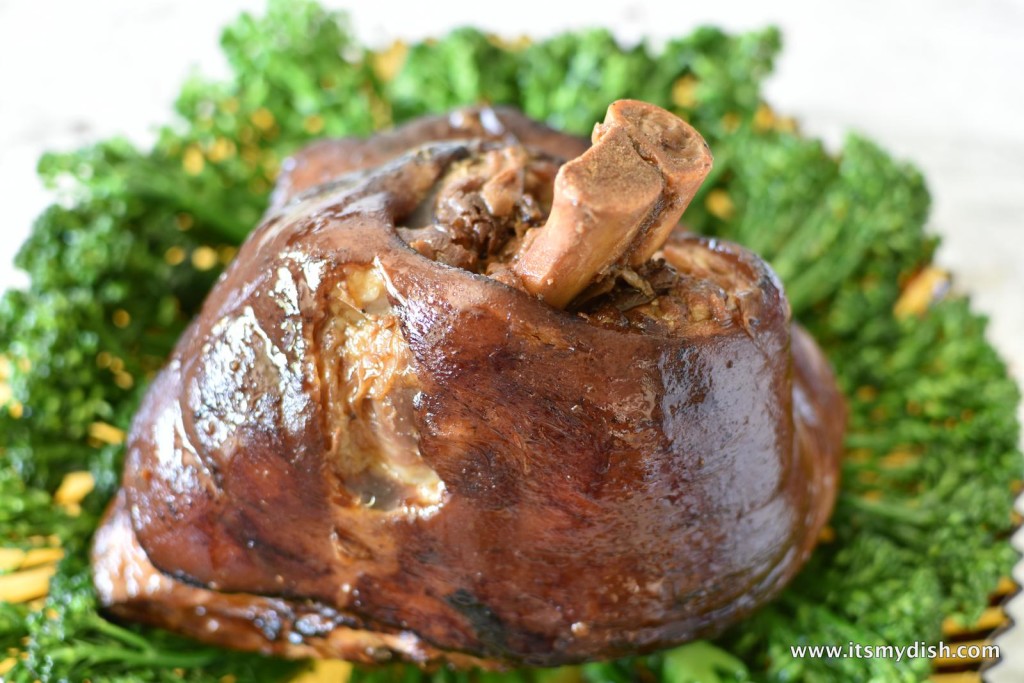 Here in America, when we think of pork leg, we think of the holiday ham. Similar in Taiwan, the leg of pork is served on special occasions like lunar new year. I think the main reason is that it’s an impressive presentation and it can serve a lot of people at once. There are many various recipes to braising a pork leg that require a lot of Chinese herbs and spices. I’ve simplified the recipe to the main basic ingredients that can easily be found in a western supermarket that have an Asian section.
Here in America, when we think of pork leg, we think of the holiday ham. Similar in Taiwan, the leg of pork is served on special occasions like lunar new year. I think the main reason is that it’s an impressive presentation and it can serve a lot of people at once. There are many various recipes to braising a pork leg that require a lot of Chinese herbs and spices. I’ve simplified the recipe to the main basic ingredients that can easily be found in a western supermarket that have an Asian section.
What I love about the braised pork leg is that the dish can be served many ways, just like a roasted turkey can find its way into a sandwich or a salad. The braised pork leg can be a great leftover ingredient for some creative arrangements. It can be served as a cold cut appetizer, sandwiched in a Chinese bun, or chopped up into a hash over rice. The options are endless.
It’s rare to find a fresh pork leg in the supermarket these days but I always keep a look out and when it’s finally out there, it can be easily purchased between $0.99 to $1.99 a pound which is an excellent price considering it’s versatility and how many people it can feed.
Ingredients
- ½ leg of pork (about 7-10 pounds)
- 3 stalks of green onions
- 1 ½ inch of ginger
- 3 star anise
- 1 bulb of garlic
- 1 cup soy sauce
- ½ cup shaoxing rice wine
- ¼ cup sugar
- 2 tbsp mirin (optional)
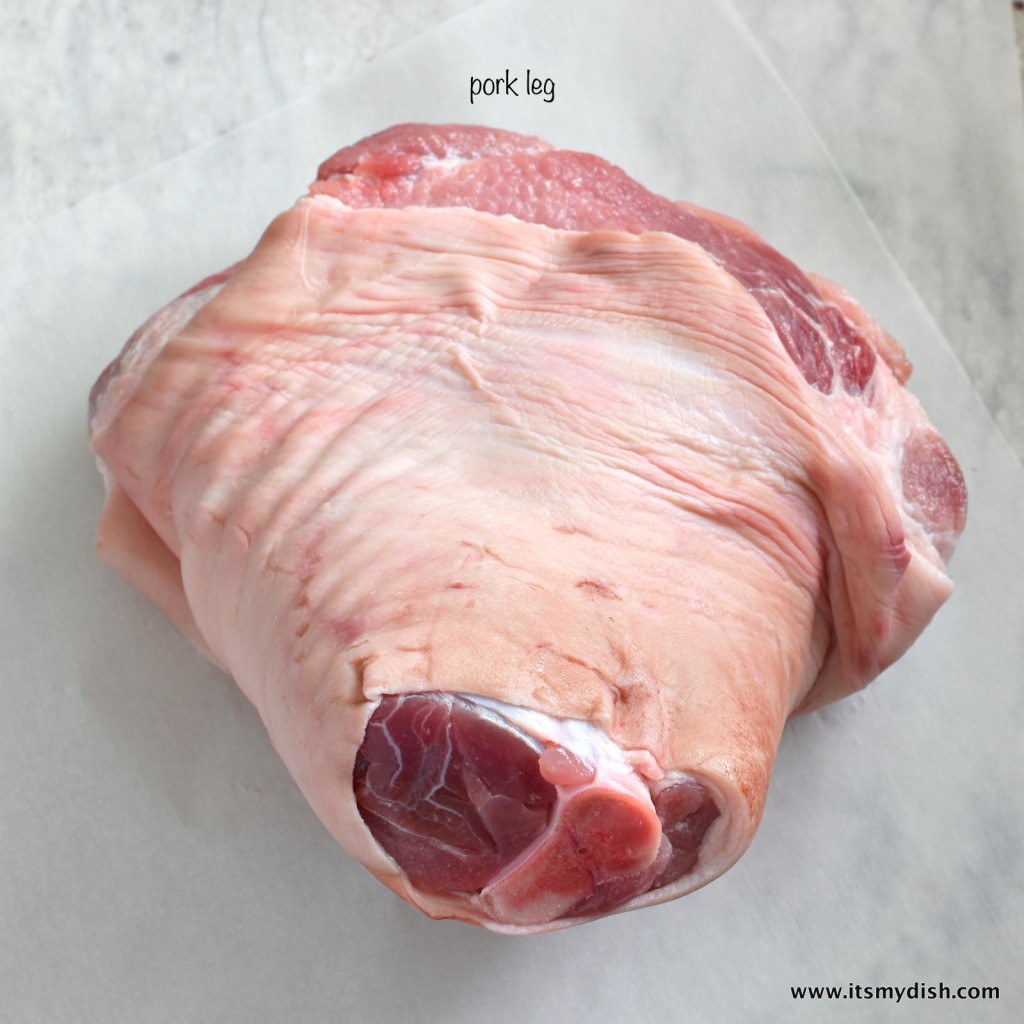
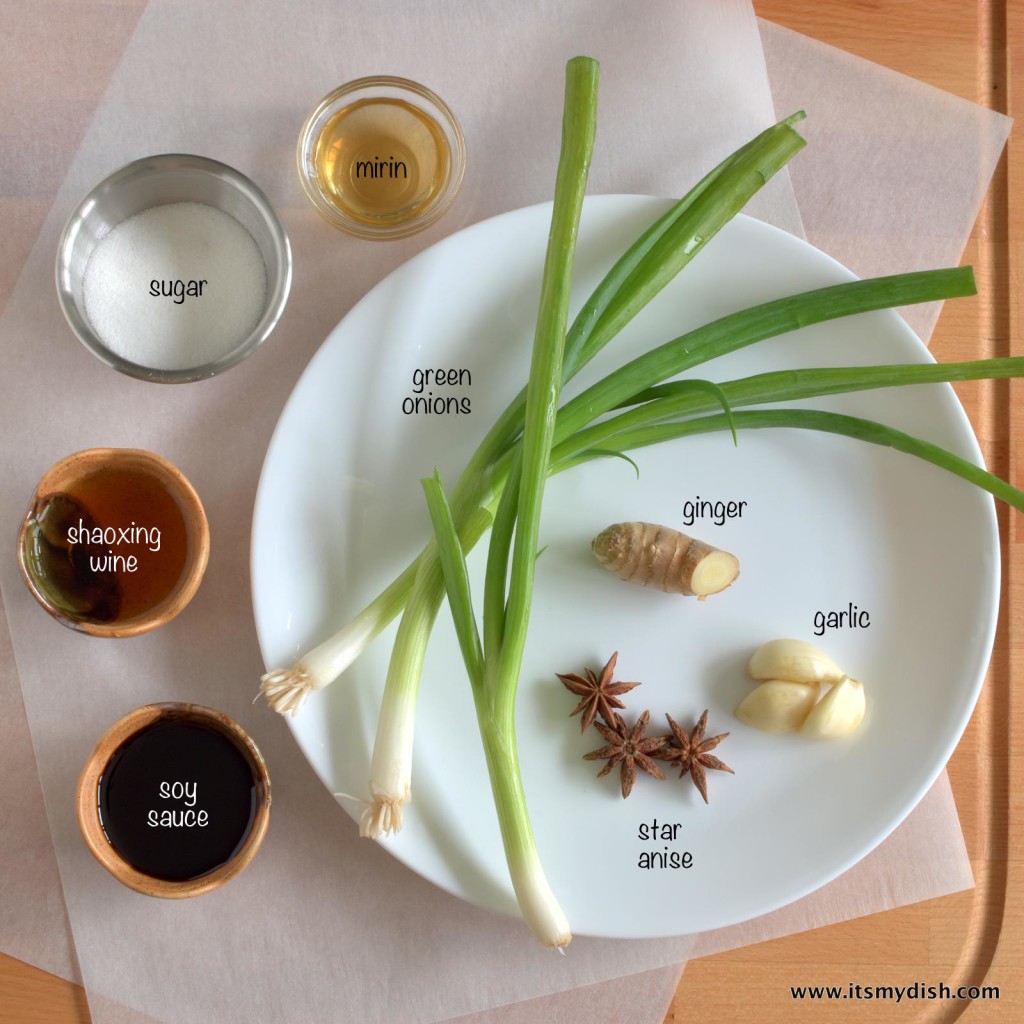
Directions
There are many ways to ‘prep’ the leg. Some people deep fry the leg, others parboil in water, and some brown in a frying pan. For me, I will use the browning method because that’s the easiest and has a higher error tolerance. Pro Tip: To make a nice browning, lightly rub soy sauce all over the pork leg and let it sit for about 10 minutes for the sauce to absorb and evaporate. 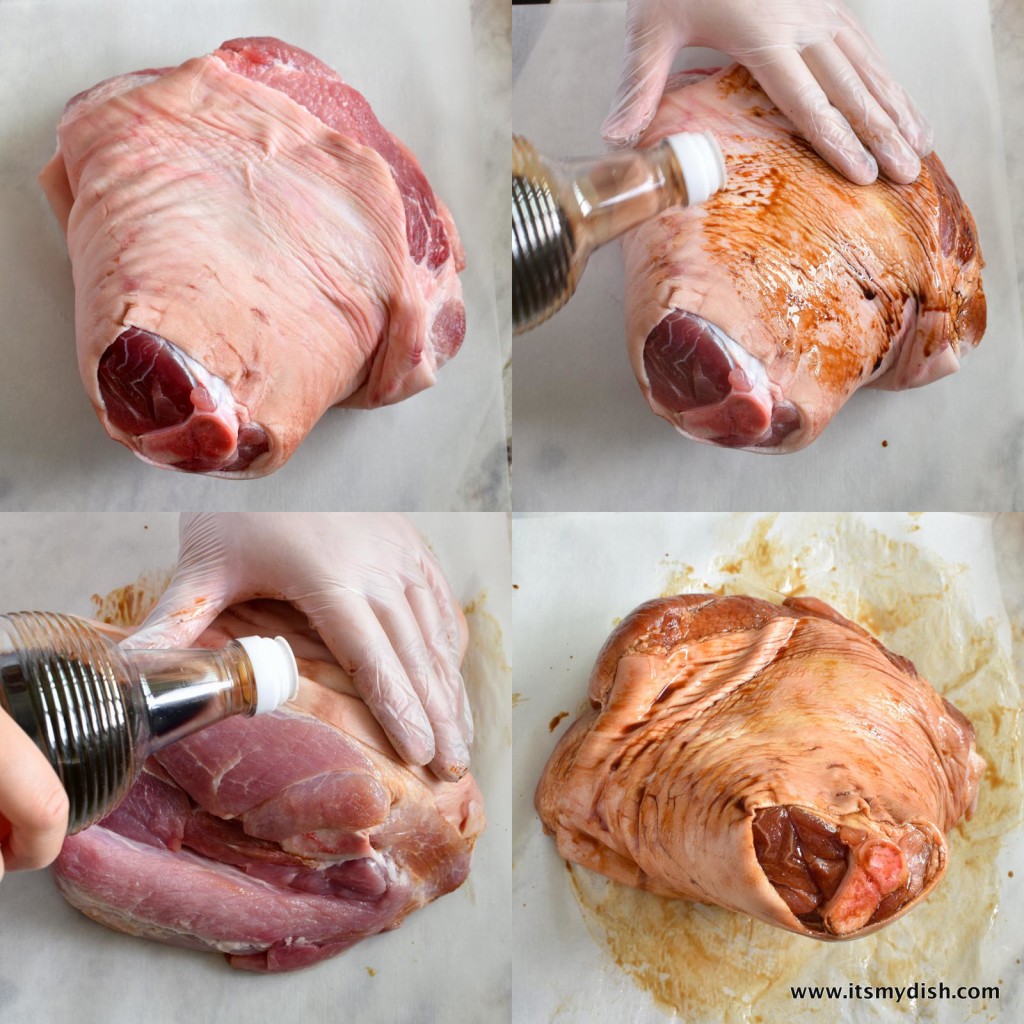
Heat a clean pan with some cooking oil. Slice the ginger and stir fry for a few minutes. Then throw in the garlic and green onions and continue to stir-fry for about 2-3 minutes until starting to turn golden and very fragrant and remove. Next, Brown the leg on all sides over medium high heat. This process might take 2 to 3 minutes on each side. Once the pork is nice and golden brown, remove and set aside.
Add star anise, soy sauce, rice wine, sugar, and mirin along with the aromatics into the pot. Pro Tip: Mirin is completely optional but it helps provide a sheen to the finished product. Gently slide in the pork leg and add water until ¾ of the pork leg is covered. 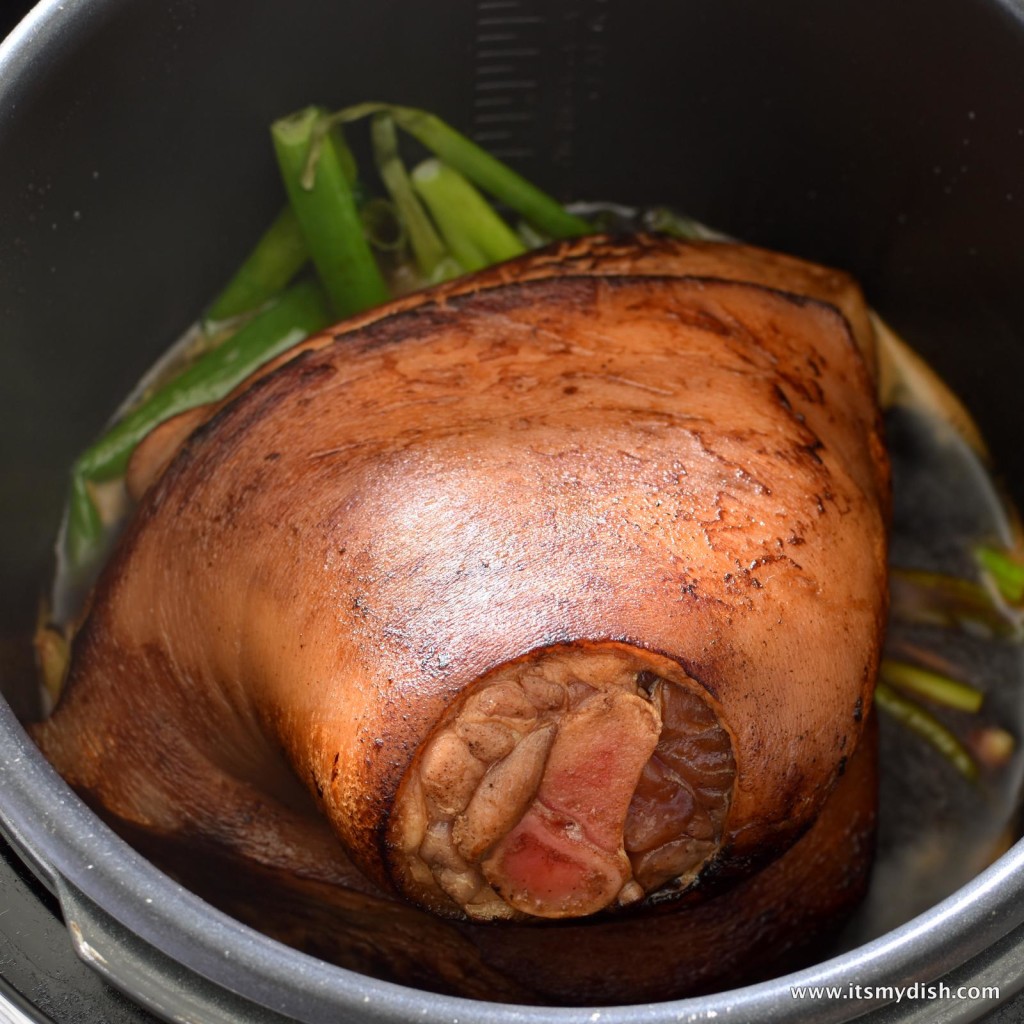 Turn the heat on high until the sauce is boiling, then turn the heat down to medium low so that it’s a gentle boil or a high simmer. Basically there should be bubbling in the sauce but at a relatively slow rate. Cover and cook for 2 hours until tender. There is really no fear of overcooking the pork, it mainly depends on how tender you want the meat to be. Please note that the softer it is, the harder it will be to carve, so at that point, basically just use a fork or your hands and pull apart the pork. For Taiwanese people, there is a fine balance of texture called N’eng-Q or 軟Q. What literally translates to tender but chewy. If undercooked, it’s too chewy but if overcooked, it becomes mushy and lacking a bite. At the point of N’eng-Q, go ahead and remove the pork leg and let it cool down so it can be carved.
Turn the heat on high until the sauce is boiling, then turn the heat down to medium low so that it’s a gentle boil or a high simmer. Basically there should be bubbling in the sauce but at a relatively slow rate. Cover and cook for 2 hours until tender. There is really no fear of overcooking the pork, it mainly depends on how tender you want the meat to be. Please note that the softer it is, the harder it will be to carve, so at that point, basically just use a fork or your hands and pull apart the pork. For Taiwanese people, there is a fine balance of texture called N’eng-Q or 軟Q. What literally translates to tender but chewy. If undercooked, it’s too chewy but if overcooked, it becomes mushy and lacking a bite. At the point of N’eng-Q, go ahead and remove the pork leg and let it cool down so it can be carved. 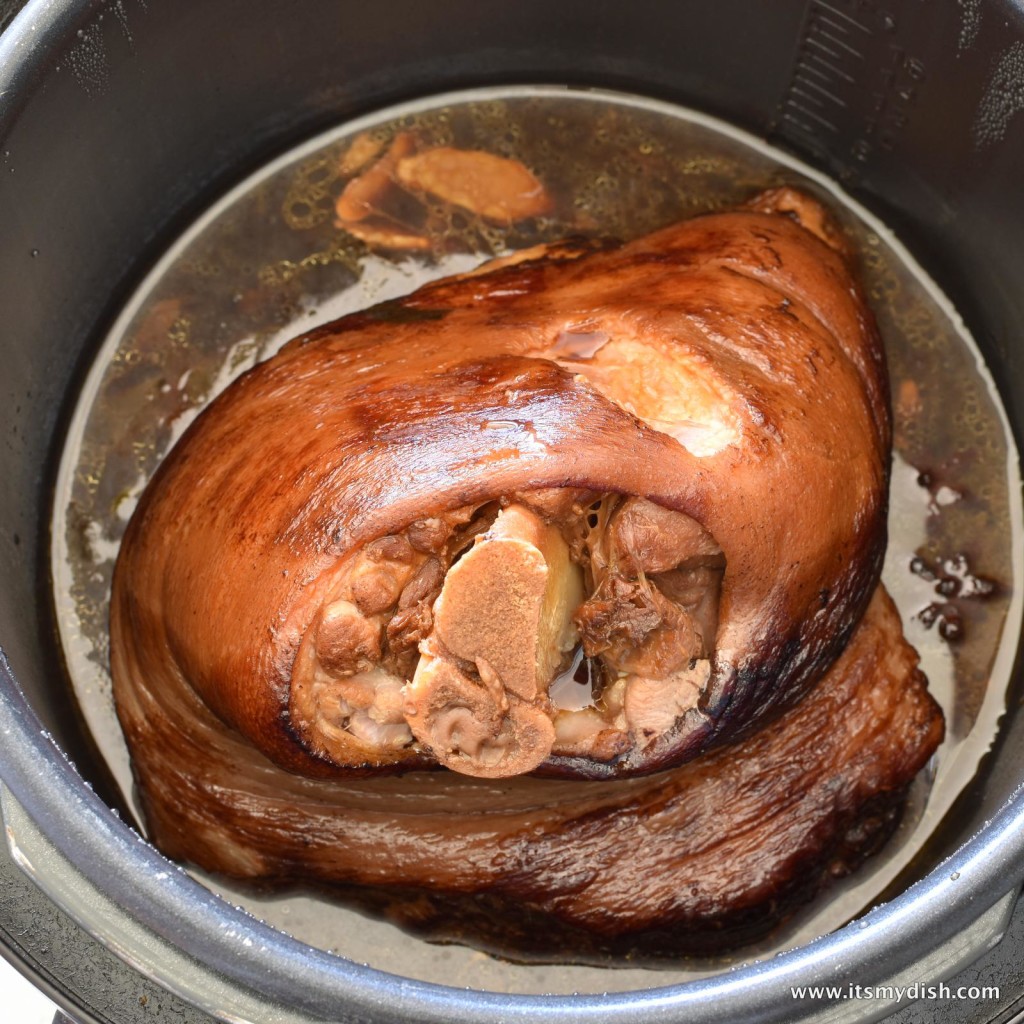
Turn up the heat on the remaining sauce and reduce it by about 50%.
Thinly carve the pork and drizzle with sauce and serve over rice. I love to put the pork on the rice first, then drizzle with sauce which will also flavor the rice. So delicious!
NOTE: for this particular recipe, instead of braising in a pot, I used a pressure cooker to save time and save me from watching the flames for 2 hours. If you want to use a pressure cooker, do not add extra water to the sauce and cook on high pressure for about 20-30 minutes. You’ll need to play with the timing since each pressure cooker is different and also the size of the leg can affect the cooking time.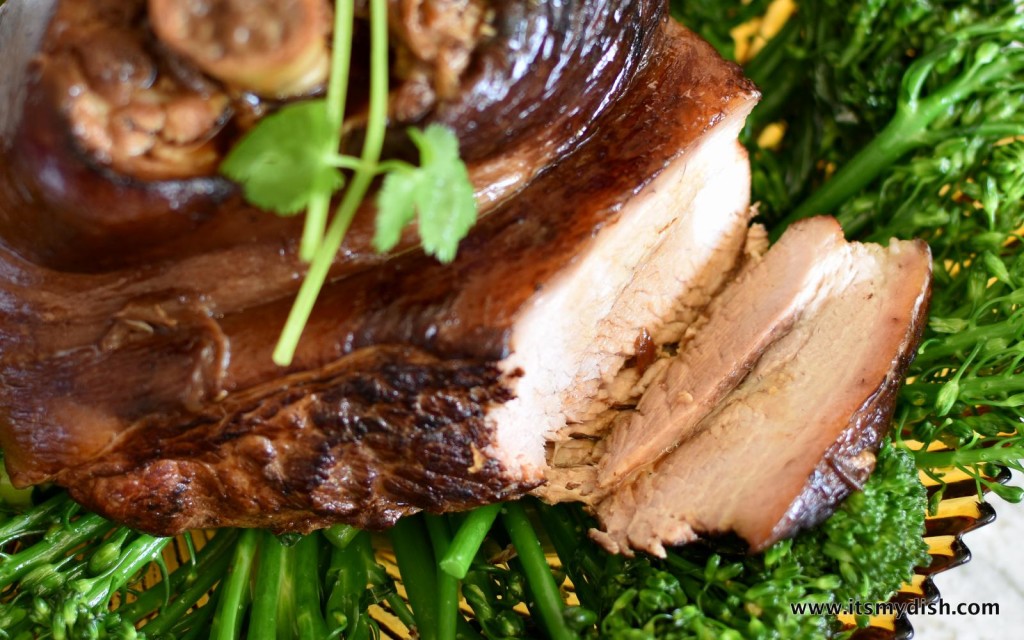
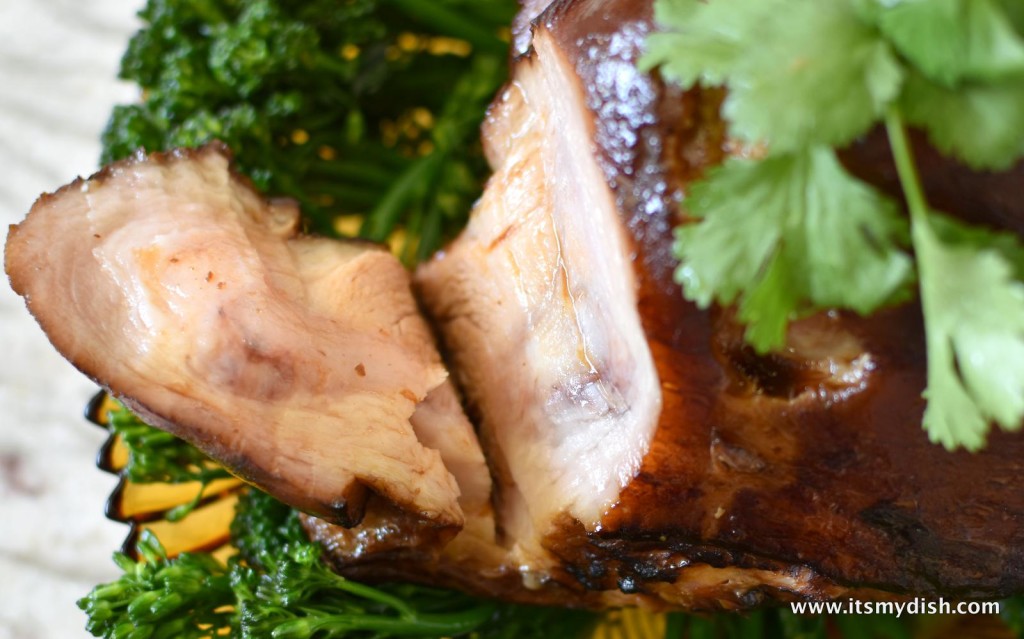


- ½ leg of pork (about 7-10 pounds)
- 3 stalks of green onions
- 1 ½ inch of ginger
- 3 star anise
- 1 bulb of garlic
- 1 cup soy sauce
- ½ cup shaoxing rice wine
- ¼ cup sugar
- 2 tbsp mirin (optional)
- rub pork leg with some soy sauce to help browning process
- brown pork leg on all sides in a frying pan (2-3 minutes each side)
- stir fry ginger, garlic, and green onions until fragrant (2-3 minutes)
- add soy sauce, rice wine, sugar, mirin, and star anise
- add pork leg and braise for 2 hours in a pot (or 30 minutes on high with pressure cooker)
- remove the pork and reduce down the sauce about 50%
- after pork has cooled, slice and pour sauce on pork
- garnish with cilantro or chopped green onions
You mentioned that you simplified the recipe to have the main spices. What are some of the harder to find spices that would make this recipe more complete?
Typically, we would buy a braising pouch that is already filled with various Chinese herbs and spices. Depending on the brand, they would use different spices in differing amounts. Here is an example on Amazon.
I am not an adventurous cook but would like to try this recipe ,,,,,,, could I cook it in a slow cooker rather than watch over it for 2 hours ? If I can do that how long shoul$ I cook for ?
I’m sure you can use the slow cooker. In my recipe, I used a pressure cooker. The key is to brown the pork first. Then slow cook maybe 8 hours. You can always test tenderness with a fork. The good thing about slow cooker is that 1 or 2 hours over won’t affect it too much 🙂 ~Mike
Hi,
I’m confused about the extra water. Your recipe doesn’t call for extra water. I intend on cooking this in a pressure cooker so when you say don’t add extra water, where is the extra water coming from? Please clarify.
Thanks.
Hi there, my experience with using pressure cookers is that there will be more moisture extracted from the ingredients so that’s why I said you don’t need to add any water. If cooking on stove top, usually need to add enough water to at least submerge the pork leg 80% of the way. However, with the pressure cooker, even though the liquid is only from the soy sauce and wine, it’s sufficient.
I have never cooked a whole pork leg this way. I have cook pork hocks more or less the same way.oe time I was in hurry and I cooked the hock in my pressure cooker. And it turned out fine. I’m lucky as I have a Chinese butcher near me. So I can get my pork from him. I just love all the different cuts of meat he sells.
Regards Peter
Being in SoCal, we are fortunate to have many Asian groceries. However, the whole pork leg I bought in a regular supermarket. I think during a few holidays of the year, whole pork legs would be on sale. Pressure cooker makes life so much simpler!